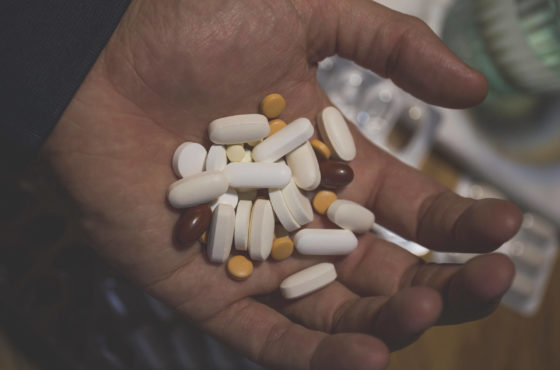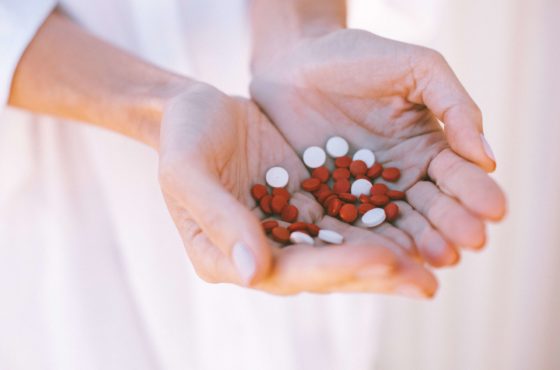Opioid Epidemic
The opioid epidemic is one of the deadliest and most widespread crises that America has ever faced. The unstoppable flow of overprescription is flooding the US market, coupled with a seemingly endless list of overdose deaths has brought this country to its knees.
Read our Opioid Factsheet

Although the death count keeps rising day after day with nearly 42,000 fatalities in 2016 alone, the government and local authorities struggle to contain this tragedy, rowing against the economic interests of a few powerful lobbies.
How did this happen and what are the real numbers of this crisis that is threatening not only public health, but national security and economic stability as well.
We will explain it in this article.
Narcotics Prescription and Overprescription
Opioids (or opiates) drugs are prescription narcotic medications used by millions of patients to cope with acute and chronic pain. They include hydrocodone oxycodone, fentanyl, and morphine, just to name a few.
Many people who suffer from conditions ranging from arthritis to cancer and diabetes need them to deal with the burden of life-long pain, while others get these drugs prescribed to fight off the painful complications of surgery, accidents and physical trauma.
Millions of pills distributed each day

The most prevalent opioid is hydrocodone with 6.2 billion pills distributed in the United States in 2016, closely followed by oxycodone with 5 billion tablets distributed. Americans consume 99.7% of the hydrocodone pills distributed worldwide.
The point is, when retail pharmacies dispensed over 214 million opioid prescriptions per year to more than 61 million patients, it’s quite clear how many of these substances get prescribed way more frequently than they should.

For example, in 2016 doctors prescribed 66.5 opioid and 25.2 sedative doses for every 100 Americans, although the average patient received 3.5 prescriptions each.

Differences in prescription rates between states
There’s a huge, apparently unexplainable difference in prescription rates, however, from state to state.
In states with higher poverty and unemployment rates, health care providers prescribe almost four times more opioids, although the health problems that cause people pain do not vary accordingly and cannot explain this variation.
For example, in the rural counties of Eastern Kentucky, the volume of narcotics supplied was estimated to be able to provide 302 pills for every man, woman and child in the county.

The states with the highest opioid prescribing rates were Alabama (121.0), Arkansas, (114.6), Tennessee (107.5), Mississippi (105.6), and Louisiana (98.1), compared to those with the lower prescription rates that were Minnesota (46.9), California (44.8), New York (42.7), Hawaii (41.9), and District of Columbia (32.5).
Addiction, Overdoses and Death Toll
Opiates are highly-addictive drugs with a dangerous potential for abuse. Subjects taking them quickly build tolerance, needing progressively increased dosages to achieve the same effects.
Once addiction kicks in, the individual becomes an addict, desperately needing his next dose to avoid facing a tremendous withdrawal syndrome.
Not everyone who abuses narcotics get them prescribed by his or her physician, though. It is not infrequent that individuals aged 12 or older illegally use narcotics for recreational purposes to enjoy the pleasant sensation of intoxicating euphoria and relaxation most people call “high”.

Almost half of those who abuse prescription opioids get them from friends or relatives (49 percent), while the others buy them from pharmacies using their own prescriptions (27 percent), or from a drug dealer (15 percent).
Narcotics misuses and fatal consequences
An estimated 47 million individuals in the U.S. misused prescription or used illicit drugs in 2015, with an average rate of 17.8 per 100 persons. 12 million of them misused pain relievers, while another 828,000 people used heroin, instead.
80 percent of heroin addicts, however, started their history of abuse by misusing a prescription opiate first. People who use these drugs for recreational or non-medical purposes 200+ days a year are at highest risk of overdose.
Opioid overdoses grew 30 percent in one year from 2016 to 2017 in 52 areas in 45 states, a percentage that reaches up to 70 percent in the Midwestern region.

The vicious self-destruction cycle of addiction often ends with a fatal overdose increasing the number of Americans who die year after year. With over 42,000 deaths just in 2016, an average of 115 U.S. citizens dies of narcotics overdose every day.
This number is even more impressing since the World Health Organization reported that a total of 69,000 people die from opioid overdose each year across the entire globe.
While many are fortunate enough to reach an emergency room in time to be saved by a quick injection of naloxone to reverse the effects, the actual death toll doesn’t seem to stop to grow.
Sadly enough, even children are not safe, with 1,504 patients between the age of 1 and 17 admitted to hospitals for opioid overdose between 2012 and 2015, nearly double from the 797 patients admitted between 2004 and 2007.
The incidence of neonatal abstinence syndrome increased fourfold between 1999 and 2013, from 1.5 to 6.0 per 1,000 hospital births.
Social and Economic Aspects of the Opioid Epidemic

The demographics of opioid abuse show that this problem has its roots in the widespread social disparities that currently affect the United States.
80 percent of those who suffer an overdose are non-Hispanic white Americans, with Hispanic Americans and Non-Hispanic black Americans accounting for about 10 percent of cases each.
In particular, with 19.85 deaths per 100,000 person-years, U.S. military veterans account for a disproportionately high number of narcotic-related fatalities.
In 2013, $78.5 billion have been spent to deal with the medical care and substance abuse treatment costs linked with for opioid addiction. A two-year $1 billion grant was allocated in 2016 with the 21st Century Cures Act to provide funding for prevention programs and improved treatment.
Although many effective treatments for opioid dependence are in place, just 10% of those who might benefit from such treatments are receiving it.
Total economic burden of the opioid crisis

The economic cost of the opioid crisis was estimated at $1 trillion from 2001 through 2017, and it is projected to cost the nation an extra $500 billion through 2020. The economic burden on public health is unbearable, as opioid abuse is associated with high rates of hepatitis C, HIV, and other infective diseases.
Health-care costs alone reached $217.5 billion from 2001 to 2017, jumping from an annual cost of $29.1 billion in 2011 to a whopping $115 billion in 2017.

In states with the largest number of opioid-related deaths such as Ohio, where up to one-quarter of job applicants fail drug tests, the epidemic may account for the widespread workforce shortage for roughly 20 percent of the observed decline in labor force participation.
Lost earnings and productivity from overdose deaths cost the United States an average of $800,000 per victim.
- References
Article references
- World Health Organization (WHO). Information sheet on opioid overdose. Who.int.
- Centers for Disease Control and Prevention (CDC). Opioid Overdoses Treated in Emergency Departments. Identify opportunities for action. www.cdc.gov
- Alana M. Vivolo-Kantor; Puja Seth, et al. “Vital Signs: Trends in Emergency Department Visits for Suspected Opioid Overdoses — United States, July 2016–September 2017”. Weekly. March 9, 2018 / 67(9);279–285
- CNN Library. March 2, 2018. Opioid Crisis Fast Facts. Edition.cnn.com.
- National Institute on Drug Abuse (NIH). Opioid Overdose Crisis. Revised March 2018. www.drugabuse.gov.
- Claire Felter. December 26, 2017. The U.S. Opioid Epidemic. Council on Foreign Relations.
- Centers for Disease Control and Prevention (CDC). Annual Surveillance Report of Drug-Related Risks and Outcomes — United States, 2017. Surveillance Special Report 1. Centers for Disease Control and Prevention, U.S. Department of Health and Human Services. Published August 31, 2017.
- Florence CS, Zhou C, Luo F, Xu L. The Economic Burden of Prescription Opioid Overdose, Abuse, and Dependence in the United States, 2013. Med Care. 2016 Oct;54(10):901-6. doi: 10.1097/MLR.0000000000000625.



I do not understand why the FDA, other than the $$$$ involved, had approved Dsuvia if it is 10 times stronger than Fentanyl.
This is an utter disgrace. How can we stop it?
My question has nothing to do with this drug. I filed a lawsuit on the oxy,loratab,ect.first of the year. These people who claimed to be lawyers took all my information,I signed papers and now when I call wanting to get update im told my call can not go through.